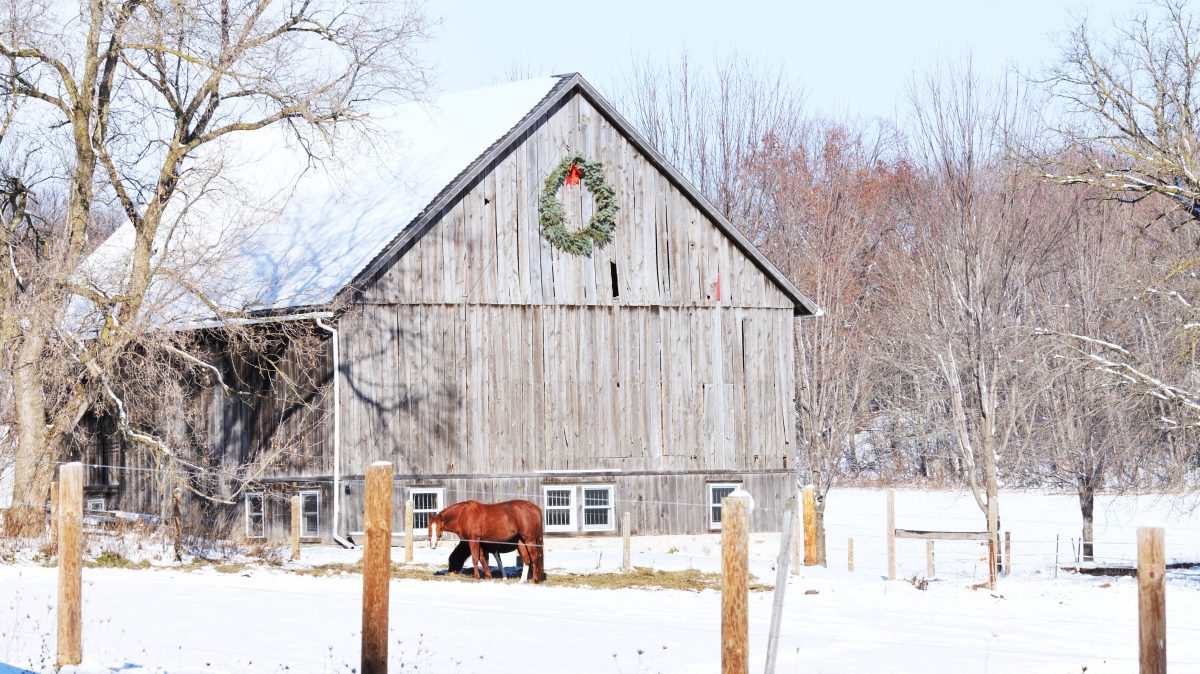American Agriculture Brings People Together over the Holidays
Guest Author
Special Contributor to FB.org

photo credit: Getty
Guest Author
Special Contributor to FB.org
By Robert Giblin
Christmas and other December holidays are steeped in a variety of traditions, but perhaps there is no other time of the year when celebrations revolve so strongly around U.S. agricultural products and thoughts of farm life.
Christmas and holiday cards, trees, meals—all focal points of the holiday season—have strong ties to American agriculture. Although relatively few Americans have personal connections with farms, rustic farm scenes remain popular images on Christmas and holiday cards symbolizing a warm, nostalgic view of the life people long for during the holiday season.
Most holiday traditions begin on the farm, as each year, some 25 million to 36 million fresh-cut Christmas trees find their way into American homes.
The trees are supplied by some 15,000–20,000 tree farms, found in almost every state.
Food from America’s farms and ranches provide the social centerpiece for holiday gatherings, whether it’s the hors d’oeuvres for the holiday party, crackers and cheese for visiting friends, or the main holiday meals that bring families together.
American holiday meal traditions trace their origins to the meals served in the home countries of immigrants who have come to America, but the evolution of agriculture has continuously improved the assortment on the holiday table.
Most holiday meals are built around meat. Turkey, beef, goose, lamb, venison, rabbit, duck and pheasant, and pork, were popular in England, and appeared on American Christmas dinner menus as early as the 1600s. Turkey, ham and roast beef remain the most popular meats served at American holiday meals. Hams have been featured in December celebrations in many countries for centuries. At one time in the U.S., turkeys were kept on farms because they required little care and could be used to feed a crowd without economic sacrifice. Chickens had more economic value for egg production, as cows did for milk, and the commercial beef industry didn’t evolve until the 19th century. Now, modern farming practices make them all readily available.
By the late 1700s, holiday menus included ice cream, acorn squash, lima beans, sweet potatoes, raisins and nuts, cranberries, plums, peaches, and apples and cherries for pies.
In the pioneer days, American Christmas menus depended on location, economics, home situations, and heritage. People in larger cities—as well as those living on or near farms—tended to have more access to a broad range of food items than those living in outposts, camps or wilderness areas. By the early 1900s, agricultural expansion made it possible to incorporate lettuce, oranges, celery, grapefruit and other fresh fruits and vegetables into holiday meals.
Although Americans spend more on food in December than any other month, a traditional holiday meal with all of the trimmings remains a bargain. A holiday meal with turkey as the centerpiece costs about $5-$6 per person—less than the price of a burger, fries and soft drink at a fast-food restaurant. Dinner with ham, roast beef or prime rib is slightly higher, but still as little as $10-$12 a person, and less than the cost of lunch at a fast-casual restaurant.
While still a bargain, the real value of a holiday meal is priceless: the true worth comes from the fellowship and joy of gathering family and friends around the table to celebrate. From the scent of a Christmas tree to the smells and tastes of a holiday meal, America’s farmers and ranchers are happy to play their role in making it all possible.
On behalf of America’s farmers and ranchers, and all involved in American agriculture, have a joyous and safe holiday season, and best wishes for the New Year.
Robert Giblin
Freelance writer
Robert Giblin writes, speaks and consults about agricultural and food industry issues, policies and trends.
Trending Topics
VIEW ALL